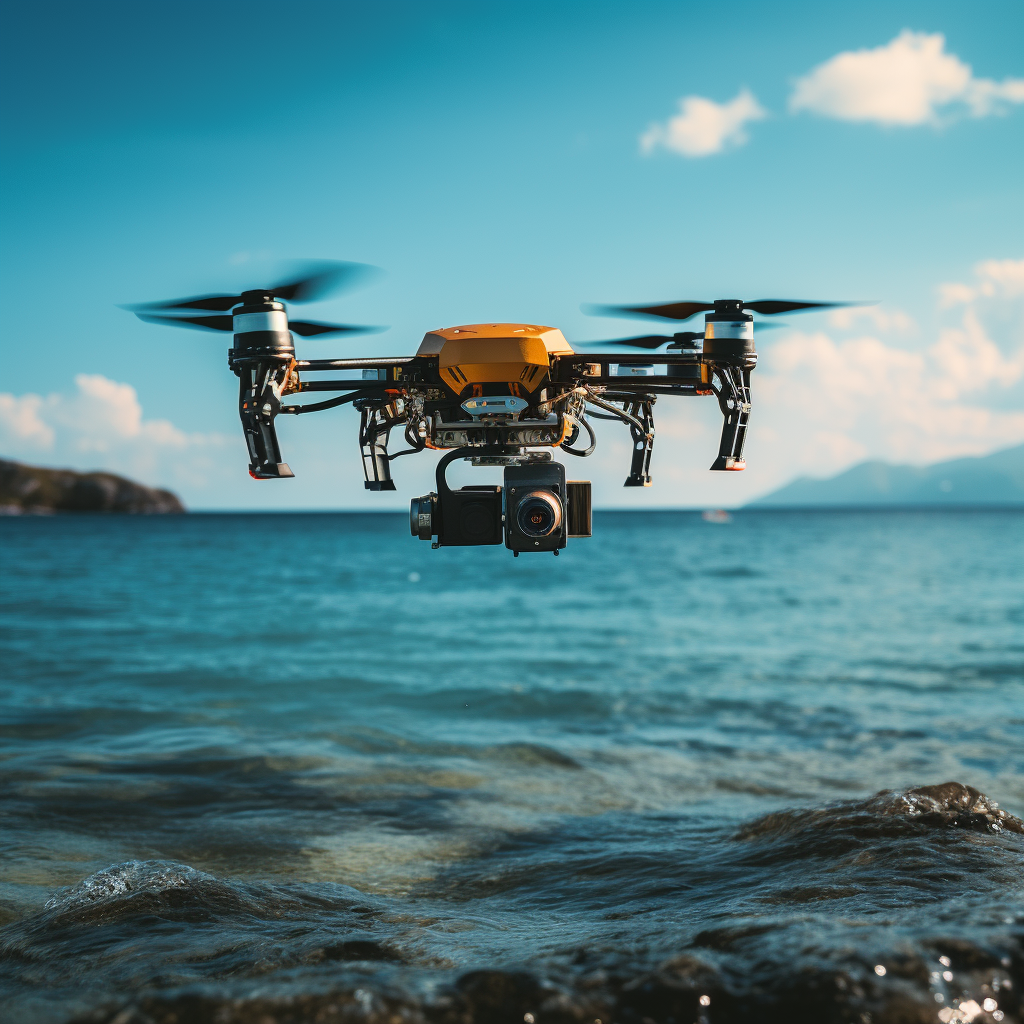
Drones: A Modern Lifeguard’s Aerial Ally
Innovative use of drones for security: a global trend touches the New Jersey coastline
The sun-soaked beaches of Atlantic City and the Jersey Shore, while a magnet for summer thrill-seekers, harbor perilous secrets beneath their waves. The unfortunate incidents of drownings and the increasing reports of shark encounters have painted a stark reality: the enchanting allure of the coast belies a potential danger, especially to uninformed swimmers. The dire statistics, including the 85 lives claimed by rip currents and high surf in 2023 alone, underline a pressing need for advanced safety measures along the Eastern seaboard.
In a bid to mitigate these dangers, public safety units have turned their eyes – and technologies – to the skies. Drones, armed with advanced features like cameras, PA systems, and inflatable rescue devices, have emerged as essential tools in extending the lifeguard’s vigilance and reach beyond the break of the waves. Not merely constrained to warning swimmers or surveilling wildlife, drones hold the capacity to deliver life-saving apparatus to individuals in distress, bridging the crucial moments before lifeguards physically reach them.
Across the globe, from the sun-baked beaches of Australia to the vibrant coasts of Rio de Janeiro, drones have proven to be indispensable assets in coastal safety. Especially over water, these devices operate with significantly low risk while offering immeasurable benefits to the communities they safeguard.
Coordinating Efforts for Coastal Safety
On a chilly October morning, the Atlantic City Fire Department (ACFD), in tandem with several other public safety and emergency management units, showcased a testament to this technological advancement in safety measures. Through a series of flight exercises conducted off the Atlantic City’s beach, these teams demonstrated the potential of drones in enhancing the efficacy and reach of lifeguard and rescue operations.
The exercise, a collaborative endeavor involving the National Aerospace Research and Technology Park (NARTP) and the New Jersey Smart Airport and Aviation Partnership (SAAP), was not merely a demonstration but a tangible step towards integrating drone technology into the arsenal of public safety measures.
Continuous Efforts and Future Projections
Scott K. Evans, the Atlantic City Fire Chief, emphasized the invaluable role of drone technology in augmenting the capabilities of lifeguards and public safety crews amidst the challenges of patrolling extensive beach stretches and managing potentially dangerous surf conditions.
Moreover, Howard J. Kyle, President of the NARTP, highlighted the essence of utilizing emerging technologies to elevate public safety, affirming the ongoing commitment to melding technological advancements with essential public safety operations.
Projecting Ahead: An Ongoing Commitment to Safety
In light of the exercises and technological demonstrations, the forward-looking initiatives in Cape May County underscore an ongoing strategy to persistently enhance public safety through technological integration and tactical exercises. With plans extending into 2024, involving various local and national first responders such as the United States Coast Guard, the commitment to employing technology for public safety, especially in the precarious coastal contexts of the Jersey Shore, remains both a priority and a promise.
As the waters of Atlantic City continue to murmur with both fun and latent danger, the vigilant eyes of drones, paired with the dedicated efforts of public safety units, forge a shield of protection, ensuring that the joys of the shore are not eclipsed by the lurking perils beneath the waves.


